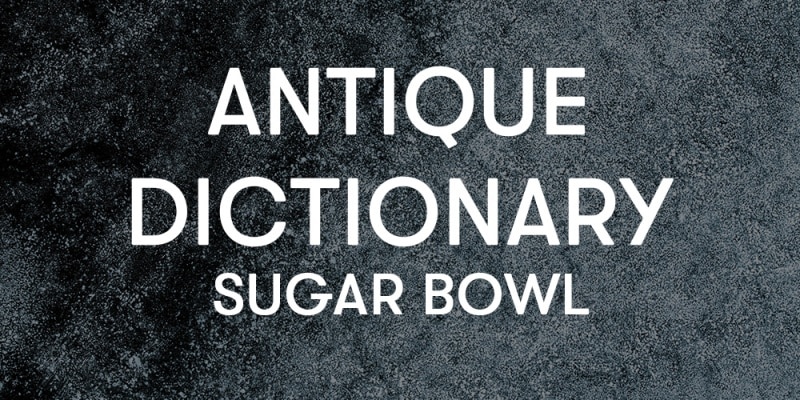
Today’s word is: sugar bowl. Let’s discover its diffusion and a story that few people know: that of sugar.
The spread of the sugar bowl

The sugar bowl as we all know is a container for sugar. It established itself at the beginning of the eighteenth century in conjunction with the European spread of hot drinks such as tea, coffee and chocolate. The first sugar bowls, however, date back to the second half of the seventeenth century. They were made of majolica or metal. They had the shape of small hemispherical bowls, with molded circular base. They rested on three feet; They had a simple lid almost flat and special springs to collect the lumps.
As time went on they became more and more elaborate. The European country that specialized most in the production of sugar bowls was France. The style that lent itself best to the realization of these objects was the Rococo. Its peculiarities, in fact, lent themselves well to express themselves happily in the sugar bowls.
Sugar
Sugar bowls were created to contain sugar. Precisely for this reason we decided to tell you about the history of this food.
After 1650 England made it one of the main foods. Thus it became the most sought after colonial genre along with tobacco. Precisely because of the great demand, the first factories opened in the Caribbean. The historian Mintz even states that the first real factories are not those described by Marx in England but those of sugar in the Caribbean. Sugar therefore played a fundamental role in capitalist development and in the creation of a production system (which at the time was based exclusively on the slave trade). Without this food, coffee, chocolate and tea would not have spread in Europe.
A large production of sugar began, so much so that at one point the British found tons of this food on the market. Here for the great law that governs the market, it fell in price. Over the centuries, in fact, sugar has lost its distinctive value. If before it was a product reserved for kings and the bourgeoisie, now it is a product for everyone
An example of a sugar bowl
To describe this small but elegant object we decided to bring you a silver service of the mid-‘900 present in our antique warehouses.

Embossed and baccellated silver service with wooden sockets. Service consisting of teapot, coffee maker, sugar bowl and milk jug. Mark of silver incusso, that of the silversmith little decipherable


If you want to discover all our antiques you just have to come and visit us in our shops and in the warehouse of Cambiago. We are waiting for you!







